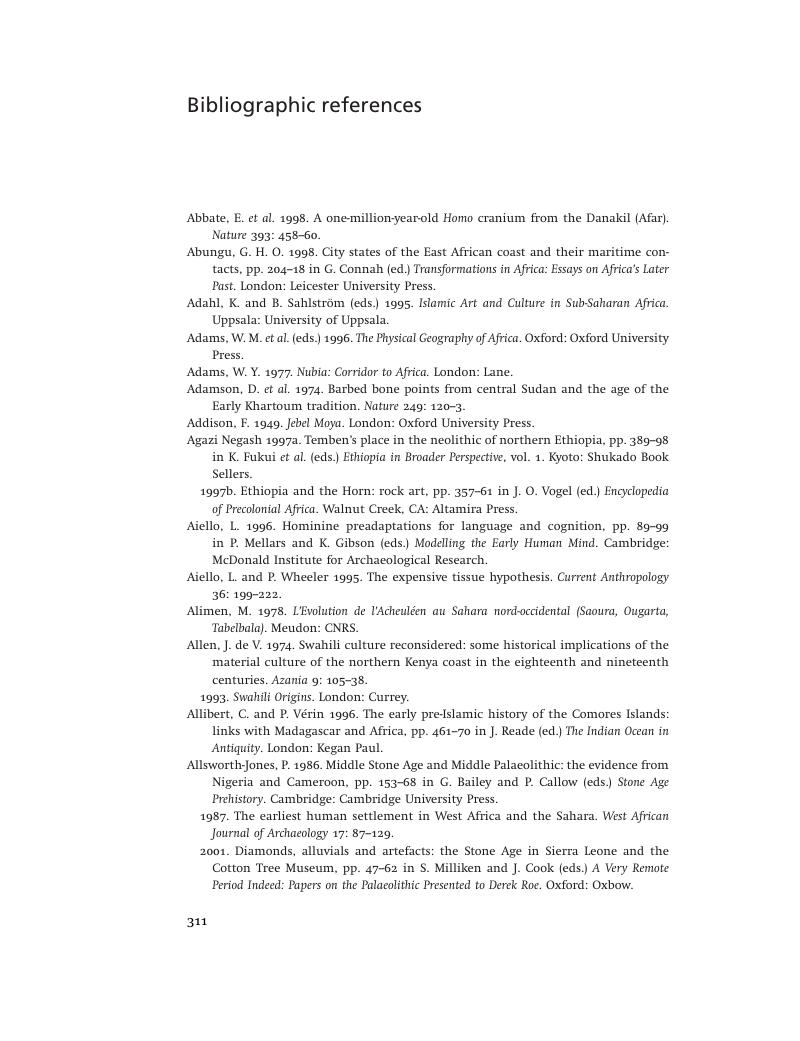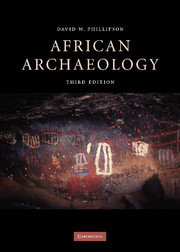Book contents
- Frontmatter
- Contents
- List of illustrations
- Sources of illustrations
- Preface
- 1 Introduction
- 2 The emergence of humankind in Africa
- 3 The consolidation of basic human culture
- 4 Regional diversification and specialisation
- 5 The beginnings of permanent settlement
- 6 Early farmers
- 7 Iron-using peoples before AD 1000
- 8 The second millennium ad in sub-Saharan Africa
- Bibliographic guide
- Bibliographic references
- Index
- References
Bibliographic references
Published online by Cambridge University Press: 05 June 2012
- Frontmatter
- Contents
- List of illustrations
- Sources of illustrations
- Preface
- 1 Introduction
- 2 The emergence of humankind in Africa
- 3 The consolidation of basic human culture
- 4 Regional diversification and specialisation
- 5 The beginnings of permanent settlement
- 6 Early farmers
- 7 Iron-using peoples before AD 1000
- 8 The second millennium ad in sub-Saharan Africa
- Bibliographic guide
- Bibliographic references
- Index
- References
Summary

- Type
- Chapter
- Information
- African Archaeology , pp. 311 - 368Publisher: Cambridge University PressPrint publication year: 2005



